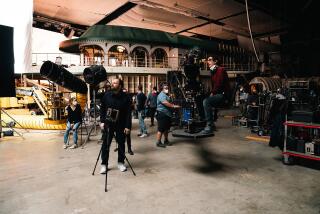Film and color
- Share via
Thank you for Lynn Smith’s comprehensive article on color in the service of character and theme (“Shading the story,” Feb. 16). As one who has researched the effects of color on behavior for more than 20 years and who teaches “Color and Visual Storytelling” at the AFI Conservatory, I can unequivocally tell you that color’s influence on the emotions is profound.
It influences us to form opinions of characters and identify with emotional undercurrents in a film. In “Philadelphia,” as dying Tom Hanks clings to his IV stand, translating the lyrics to an opera whose theme is love and loss, he is slowly enveloped by an intense red light from nowhere. It is like visual salt rubbed into an emotional wound. Hanks speaks of love and life, but the red belies his emotional reality ... his unspoken rage and mortal pain.
On the other hand, the pale red in “The Royal Tenenbaums” makes an enormous difference in the audience’s attitude to the title character. Royal Tenenbaum does incredibly despicable things, but because he’s surrounded by a bubble-gum pink environment, and because of Gene Hackman’s inspired acting, we know instinctively not to take him seriously.
The audience is often not aware that it is the color that manipulates them. This can be magic in the director’s hands. Or not. Color will continue to send signals irrespective of a filmmaker’s intentions.
Patti Bellantoni
Venice
More to Read
Only good movies
Get the Indie Focus newsletter, Mark Olsen's weekly guide to the world of cinema.
You may occasionally receive promotional content from the Los Angeles Times.










